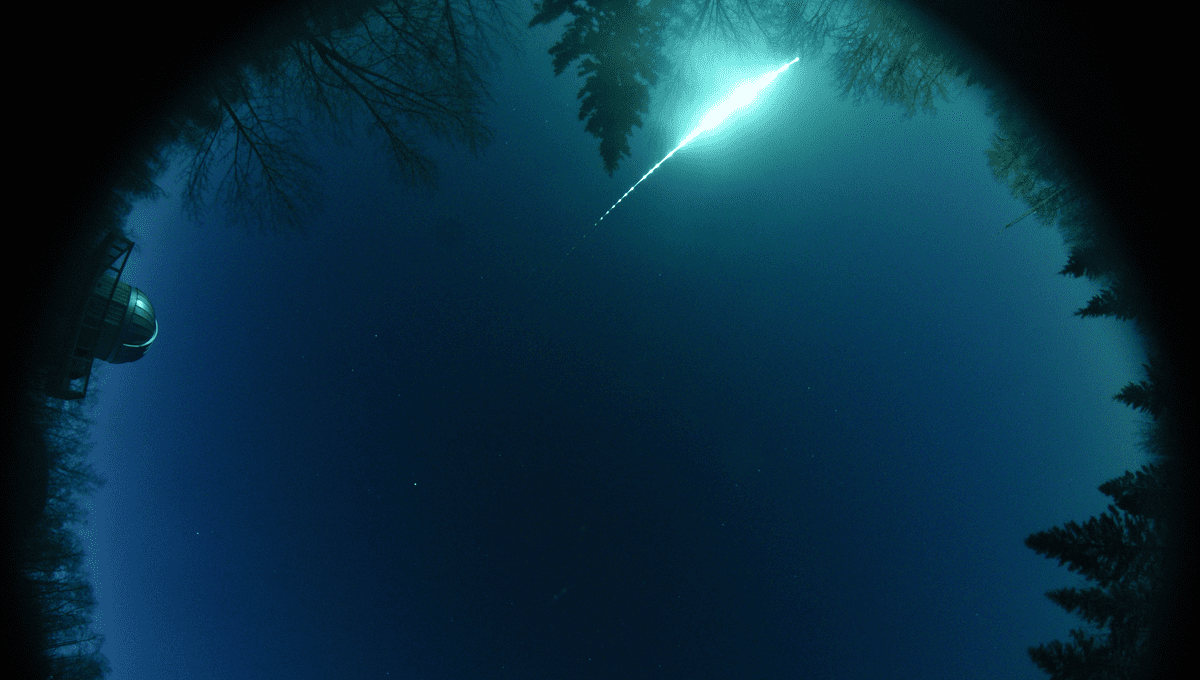
On February 22, 2021 a fireball (bright meteor) streaked across the sky over Alberta, Canada, 100 kilometers (62 miles) north of Edmonton. A network of cameras, established in the hope of finding where meteorites might land, tracked it. In this case no pieces reached the ground, but that didn’t stop the event having major scientific implications. A new paper argues the meteor’s orbit and behavior present a challenge to what we think lies at the outer reaches of the Solar System, and therefore how it – and probably other planetary systems – formed.
Like a high mountain, the Solar System has a snowline. Objects orbiting inside it are mostly rock, while those further out are either gas giants, icy moons or “dirty snowballs”. Models of the Solar System are built around this observation.
We know less about the outermost region of our system, known as the Oort cloud, since no spacecraft has ever got close to even one object out there, let alone a statistically significant sample. Sometimes, however, the Oort cloud comes to us, or at least parts of it do, in the form of comets and meteors. What we have seen aligned with the expectation that the Oort cloud would be overwhelmingly composed of ice, with rare exceptions, until the Alberta fireball provided a plot twist.
The meteor could have a big scientific effect, considering it only weighed 2 kilograms (4.4 pounds) and was about the size of a volleyball. Triangulation of the cameras in the Global Fireball Observatory allowed astronomers to confirm its speed and path as consistent with coming from the Oort cloud, with an orbit lasting 350-3,500 years and a greatest distance from the Sun of at least 100 astronomical units.
Dr Hadrien Devillepoix of Curtin University told IFLScience the Alberta fireball’s speed of 62 kilometers per second (140,000 mph) was so great there was no way any material was going to reach the ground without it being a great deal bigger. “If it had been coming from the main asteroid belt it would have been just on the edge of the size where pieces might survive,” he said. Nevertheless, based on the way it fragmented in the atmosphere the authors are confident it was formed from rock, not ice.
Close encounters with planets’ gravity can change small objects’ orbits, but Devillepoix told IFLScience, “To create the illusion of coming from the Oort cloud you’d need an encounter so close it would practically have to pass inside the planet.”
Initial orbital modelling raised the possibility the meteor was actually interstellar, like Oumuamua and Borisov; however, additional data narrowed the error bars to the point where Devillepoix says this is very unlikely.
Instead, Devillepoix and co-authors propose the meteor is part of a class of objects that formed close enough to the Sun to be rocky, probably quite near Jupiter. Encounters with planets and planetesimals early in the Solar System’s development forced them out, along with icy objects that started out somewhat further from the Sun, until both occupied the Oort cloud.
With only a single representative, it’s possible this was major outlier, but Devillepoix told IFLScience astronomers have experience extrapolating from a single example, citing the case of the Chelyabinsk meteor. The authors propose the ratio of icy/rocky objects with masses greater than 10 grams (0.4 ounces) in the Oort cloud lies between 130:1 and 5:1. That’s a big range, but also a major shift, since previous estimates lay between 100:1 and 2,000:1. To explain a ratio like that, particularly at the lower end of the range, would require a serious rethink of how objects formed from the protoplanetary disk.
The paper is published in Nature Astronomy.
Source Link: Strange Canadian Fireball Could Rewrite Models Of How The Solar System Formed